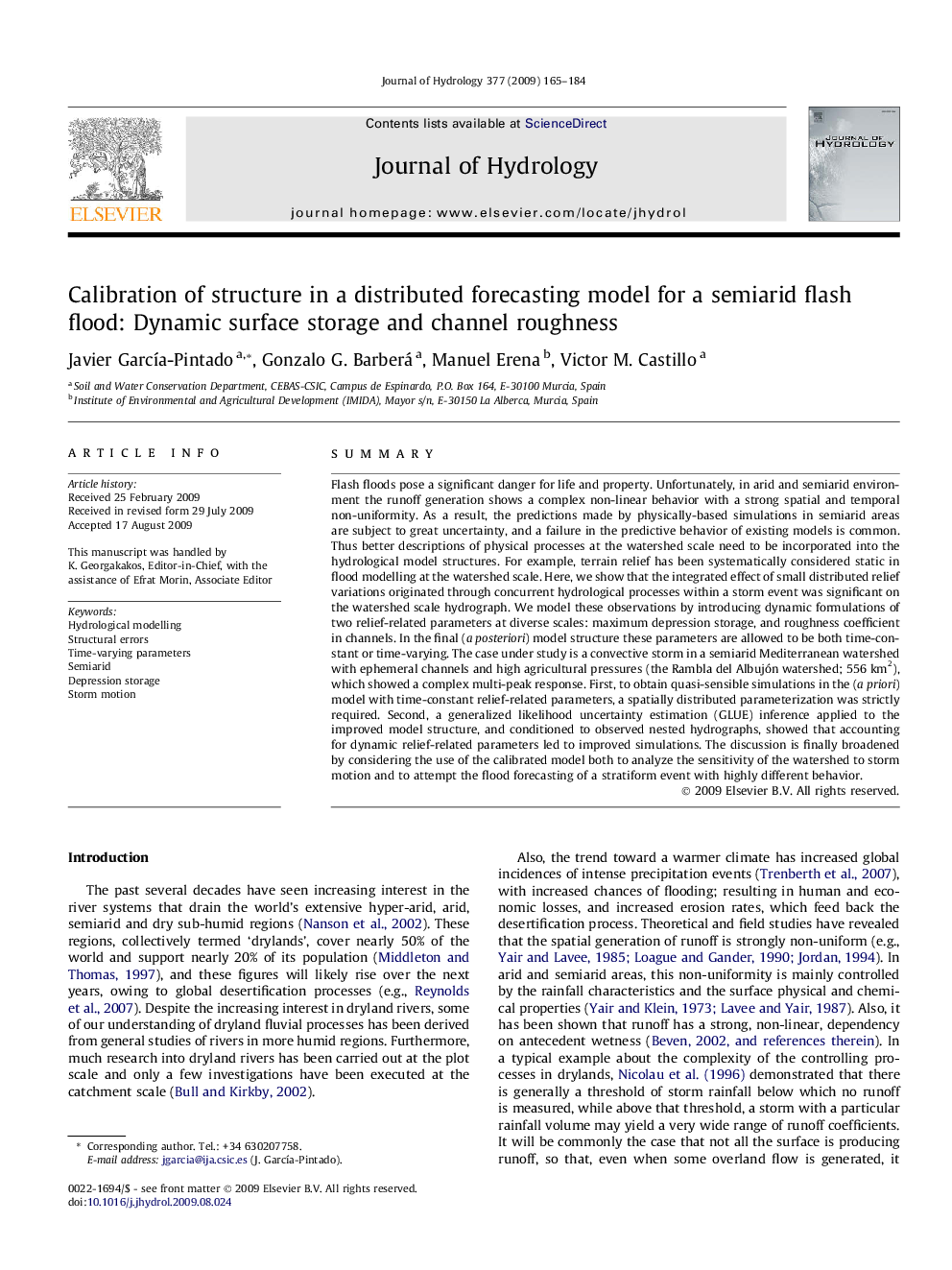| کد مقاله | کد نشریه | سال انتشار | مقاله انگلیسی | نسخه تمام متن |
|---|---|---|---|---|
| 4578542 | 1630071 | 2009 | 20 صفحه PDF | دانلود رایگان |

SummaryFlash floods pose a significant danger for life and property. Unfortunately, in arid and semiarid environment the runoff generation shows a complex non-linear behavior with a strong spatial and temporal non-uniformity. As a result, the predictions made by physically-based simulations in semiarid areas are subject to great uncertainty, and a failure in the predictive behavior of existing models is common. Thus better descriptions of physical processes at the watershed scale need to be incorporated into the hydrological model structures. For example, terrain relief has been systematically considered static in flood modelling at the watershed scale. Here, we show that the integrated effect of small distributed relief variations originated through concurrent hydrological processes within a storm event was significant on the watershed scale hydrograph. We model these observations by introducing dynamic formulations of two relief-related parameters at diverse scales: maximum depression storage, and roughness coefficient in channels. In the final (a posteriori ) model structure these parameters are allowed to be both time-constant or time-varying. The case under study is a convective storm in a semiarid Mediterranean watershed with ephemeral channels and high agricultural pressures (the Rambla del Albujón watershed; 556km2), which showed a complex multi-peak response. First, to obtain quasi-sensible simulations in the (a priori) model with time-constant relief-related parameters, a spatially distributed parameterization was strictly required. Second, a generalized likelihood uncertainty estimation (GLUE) inference applied to the improved model structure, and conditioned to observed nested hydrographs, showed that accounting for dynamic relief-related parameters led to improved simulations. The discussion is finally broadened by considering the use of the calibrated model both to analyze the sensitivity of the watershed to storm motion and to attempt the flood forecasting of a stratiform event with highly different behavior.
Journal: Journal of Hydrology - Volume 377, Issues 1–2, 20 October 2009, Pages 165–184